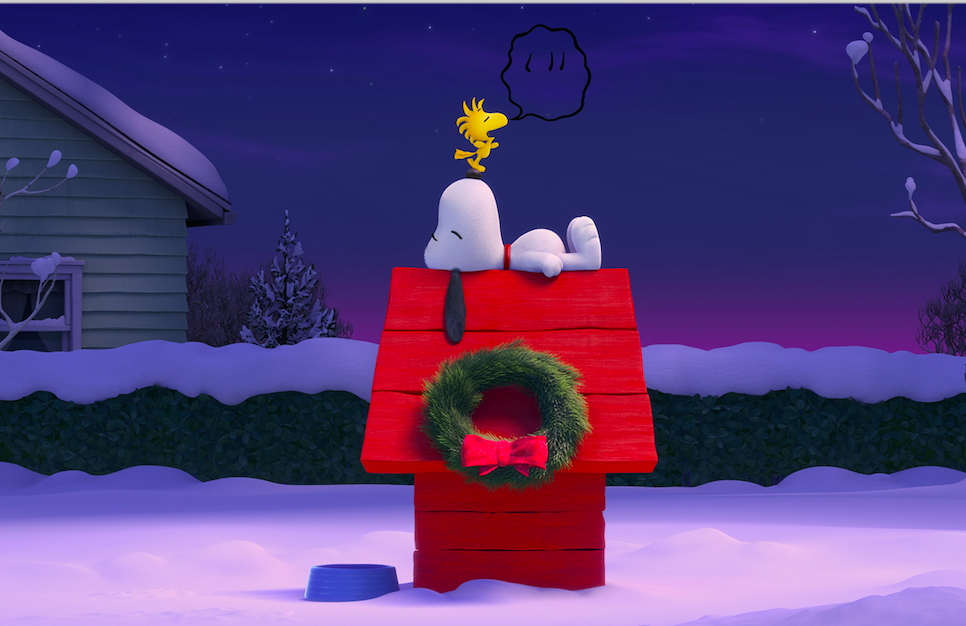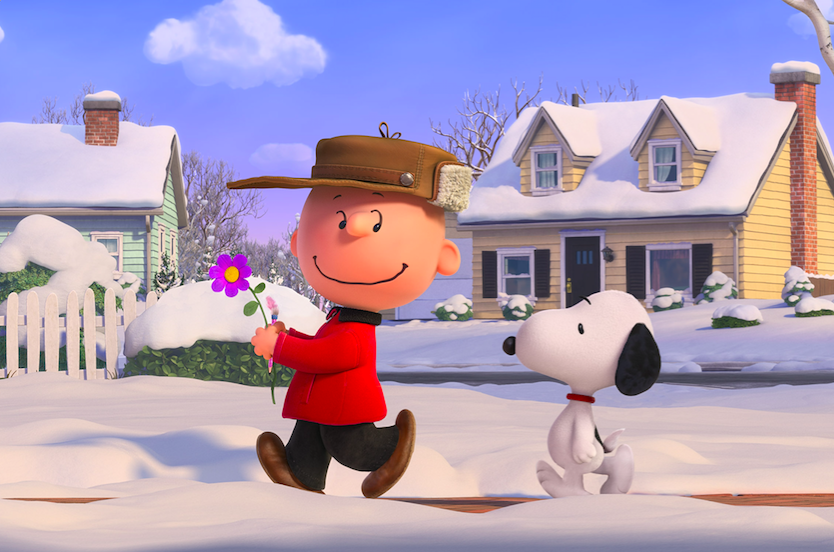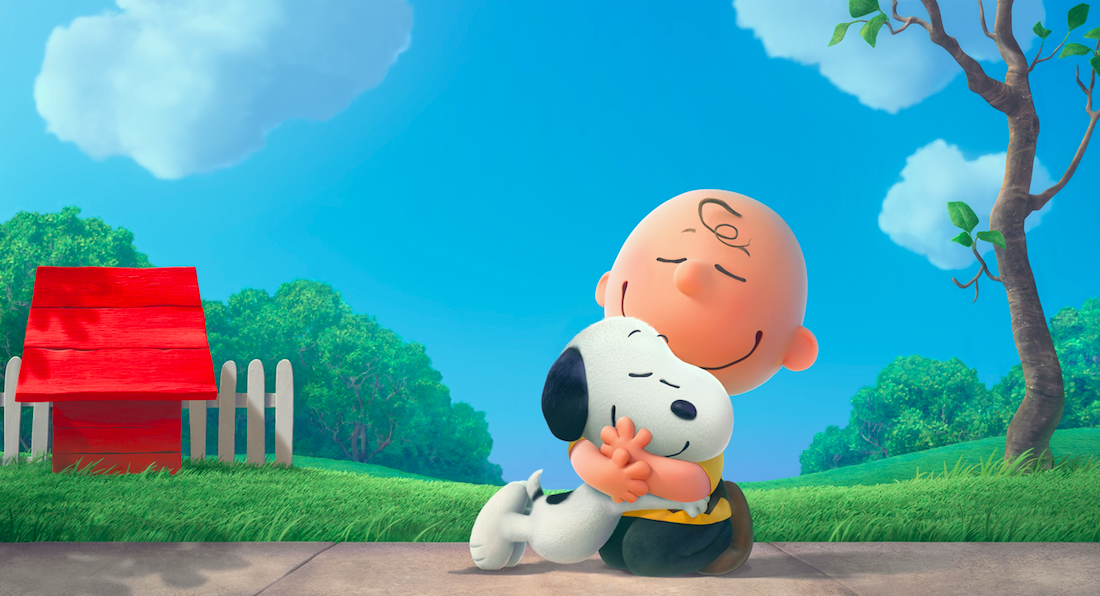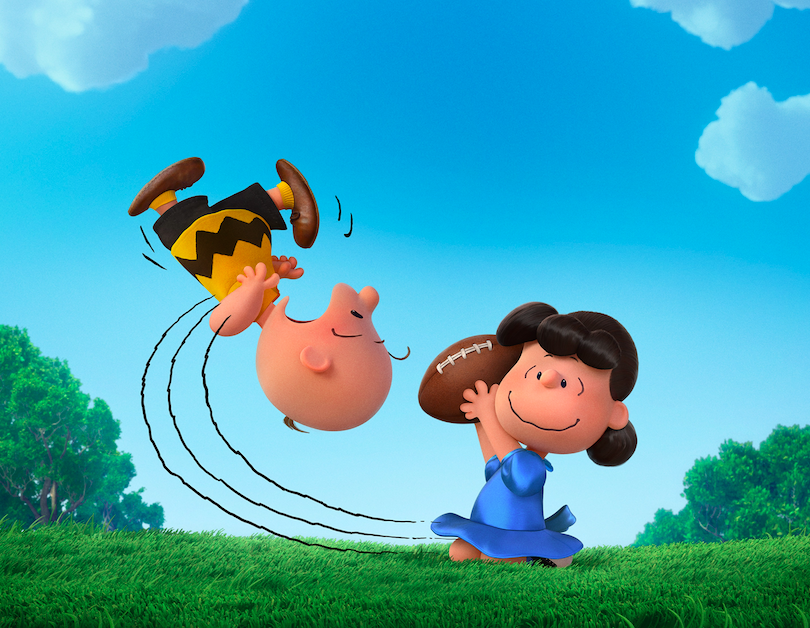The Peanuts Movie’s Animation Supervisor on Getting the Gang’s into 3 Dimensions
This week marks the return of cartoonist Charles M. Schulz’s beloved "Peanuts" crew, with Charlie Brown and the gang making their big screen debut in 3D in The Peanuts Movie. Peanuts purists, of course, might be tempted to thumb their noses at a contemporified, animated version of the classic newspaper strip cartoon, a thought that was well anticipated by director Steve Martino and his animation team at Blue Sky Studios. With three years of research and development behind them, the film’s animators have done everything in their power to preserve the simplicity of the characters’ original line-drawn essence, while dropping them into a more modern-looking 3D landscape. Charlie Brown’s eyebrows operate semi-independently of his face, Snoopy’s features still spend plenty of time on the same side of his head, and despite the new roundness of their bodies, when it comes to emotional expression, all the Peanuts need only wiggle the Schulz-style wobbly lines marking their features for us to know exactly how they feel.

The unusual combination of 2D and 3D animation plus a total faithfulness to Schulz’s line didn’t come easy. We chatted with Nick Bruno, the film’s animation supervisor, about what went into mixing multiple styles, the hacks involved, and the time it took to put it all together.
Given the mix of styles, the animation in The Peanuts Movie could be described as Picasso-like. What was the process behind arriving at the final look?
It came from us trying to hit all the iconic poses drawn by Charles Schulz himself. In order to do that, we were not able to create a true 3D model. To be perfect from all angles, that model would have to be a perfect sphere, and it wouldn’t look like Charlie Brown. Instead we had to make several head shape models, so if you’re looking from the front, that’s one model, and from the side, that’s another model. It got tricky to animate, so we animated it more like a stop motion style, so it doesn’t move as smoothly as a 3D animation movie, and it was more stylized to the technical needs to fit the style of Charles Schulz.

So how was that technically executed? What were some particular difficulties of translating the Peanuts into 3D while retaining their original look?
If you were to think of Charlie Brown, he has six different head shapes, a left and right profile, front, up and down, and a back view. Using the head models is a process similar to stop motion, in which one might take out a mouth shape of a character and replace it with another. We built a rig that would morph a model into the other shapes. In a typical movie, if we were to have a character move their head from 90 degrees to profile, we would key at 0 and 90 degrees, and the computer would interpolate that. Now, switching one head to another, the computer can’t interpret that. So we would start the move with one head target, and then snap to the next.
Given the unusual process, how long did the entire animation take, once the team got underway?
It took anywhere between 12 and 15 months, but I’ve been on the project for three years. It’s a little foggy. We did about one and a half years of pre-production and animation tests, just trying to achieve the look and establish how the characters looked and felt before we started the film.
How much did previous Peanuts animations, like A Charlie Brown Christmas, influence the way you animated this picture?
A great deal. We obviously started out just by studying Schulz’s wobbly pen line, his cartoon line, and the four panel strip. We definitely looked at the Christmas and Halloween specials as the Hallmark classics of the Peanuts. We studied the movies as well. We had access to every single comic, movie, special, even the commercials that they did way back before they did the specials. We studied Bill Melendez [Schulz’s trusted animator on the televised specials] and Bill Littlejohn [the lead animator with Melendez]. We studied everything — not just the work, but documentariess, interviews, audio interviews. We went all in. We interacted a lot with the family as well, asked them lots of questions. This way, we got entrenched not just with the product but with the people behind the product. What many people don’t know is that the comic strip is in essence Charles Schulz’s diary. We studied that quite a bit to make sure we’re paying homage to the man himself and not just his work.
The old specials are such classics. Do you think the audience will react differently to the film, given the new style? Or is this movie for a different crowd entirely?
I’m really excited to see what this movie does for many reasons. When it comes to the style, what excites us the most is that people who grew up with the Peanuts will be surprised in how faithful this is, it’s very true to the original look, to both the comics and the specials. At the same time, it adds that extra something. I don’t want to say realism, but in terms of acting and authenticity, [the new style] gives it that something extra. You can feel the characters thinking and breathing with those little dot eyes. Even Charlie Brown’s room, with the lighting, feels like a real boy’s room. It reminds me of my own room as a kid. The dimension it adds makes it feel like this is the real, living breathing universe that was drawn. And yet you can hold up Charlie Brown to any one of the comics and it’s as traced as traced can be. The third dimension was going to be enough of a departure from what we were used to seeing, so we wanted to make sure everything else we were doing was exactly what we saw [in the original cartoons].
In animating the Peanuts but staying true to those original forms, did any of the characters present more difficulty than others?
Snoopy’s head was only ever drawn one way. But technically in the movie we never rotate his head — instead we had to slide his nose and eyes around the form.

And how did working this way depart from usual processes?
In order to really maintain the level of accuracy and fidelity with these characters, our entire workflows had to be abandoned. It was so important to stay true to Charles Schulz’s work, with no compromises in all aspects of the animation.
Normally, even though we do things in a cartoony way, characters still move in true space, and the computer can still calculate their coordinates in space. Now, by no longer moving in that world, we can’t get things we normally get for free. For instance, in this case, because everything was in forced perspective, the clothes would literally shoot off the character, so we had to rig the clothes. Also, if you moved the camera at all, certain parts would no longer line up, and reveal all the cheats. There’s the classic Charlie Brown with his hands on his head, but we couldn’t actually have that hand on his head. The lighting and shadows wouldn’t work. And since it’s not moving in a real way we don’t get motion blur, so to prevent the strobing that motion blur would clean up, we used 2D animation techniques. We also used a 2D animation package, TV Paint, to draw 2D lines over the 3D lines. For instance, three swoosh lines, implying a fast kick — we would actually draw those into the movie. Because we were now animating in a different style, effects no longer worked in a traditional way. We had to stylize that as well, but we found ways to incorporate 2D drawn items from the strip and work them in in an animated way. We even grabbed Schulz’s real ink line, and put that into the movie, so his hand is really in there.




